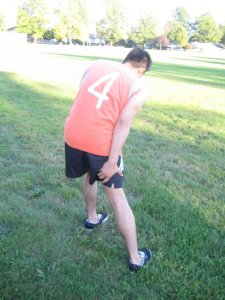Heat rash is also known as prickly heat and miliaria and it not only affects babies, but it can affect adults too especially during humid and hot weather. It develops when the sweat ducts called pores are blocked and will cause the perspiration to be trapped under the skin.
Symptoms can range from superficial blisters to deep, red lumps while some types of heat rash are very itchy or causes a prickly sensation. Heat rash just heals on its own but a severe form of heat rash will require medical care and the best way is cooling the skin and preventing sweating.
Symptoms of heat rash
Adults can acquire heat rash by the folds of skin and whatever clothing the person is wearing that causes friction on the skin. Heat rash in infants usually happens on the shoulders, neck, and chest but can occur in the armpits, creases of the elbow and groin. If you will register for first aid training, you can easily handle this condition.

Three types of miliaria
- Miliaria crystalline is the mildest form of heat rash that affects the sweat ducts found in the top layer of the skin. The blisters that are caused by miliaria are not itchy or painful and it is common in new born babies but it can also happen to adults.
- Miliaria rubra is a type of rash that occurs in the outer layer of the skin or epidermis and it is also known as prickly heat. Adults can acquire miliaria rubra when exposed to hot, humid weather or confined to bed. This type of rash can also occur in infants in their first and third week of life.
- Miliaria profunda develops on adults who have repeated attacks of miliaria rubra. This type of rash affects the deeper layer of the skin or dermis and develops after engaging in exercises or activities that will cause the person to sweat.
Causes of heat rash
Heat rash happens when some the sweat ducts are clogged in which the perspiration cannot evaporate. Instead, it will be trapped under the skin and will cause inflammation and rash. It can be caused by the following:
- An immature sweat duct like the newborn’s sweat ducts that are not yet fully developed. They rupture more easily and the perspiration is trapped under the skin and it usually happens during hot weather. Newborns that have high fever or inside an incubator have the tendency of developing blocked sweat ducts.
- Humid weather
- Doing intense exercises such as hard work or any activities that causes sweating.
- Certain medication that improves sweat gland function can also cause heat rash.
- Sleeping under an electric blanket can cause heat rash.
- Heat rash can happen to people who are confined in a hospital bed for long periods of time.
Treatment and home remedies
- During hot weather, the person should dress in loose, lightweight clothing
- After taking a bath, allow the skin dry by air instead of wiping with a towel
- Stay for a longer time in air-conditioned places or buildings.
- Avoid the use of creams and ointments which causes blockage of the pores.
- Apply a cold compress or use calamine lotion to minimize the itchiness and irritation of the skin.